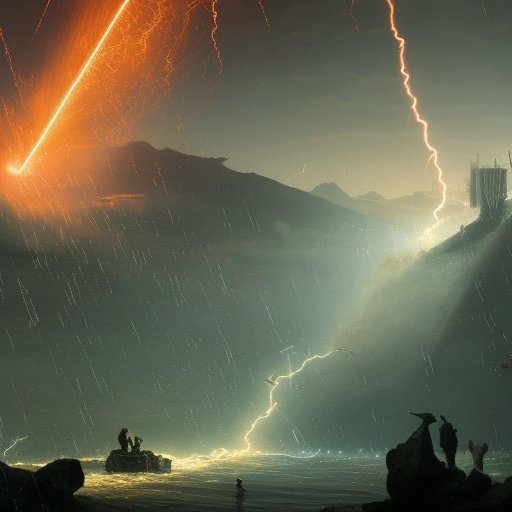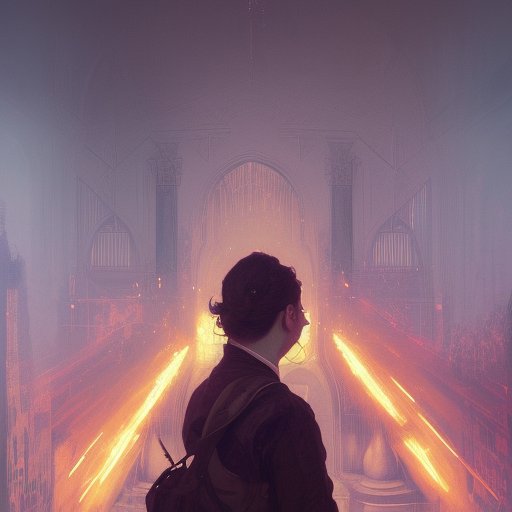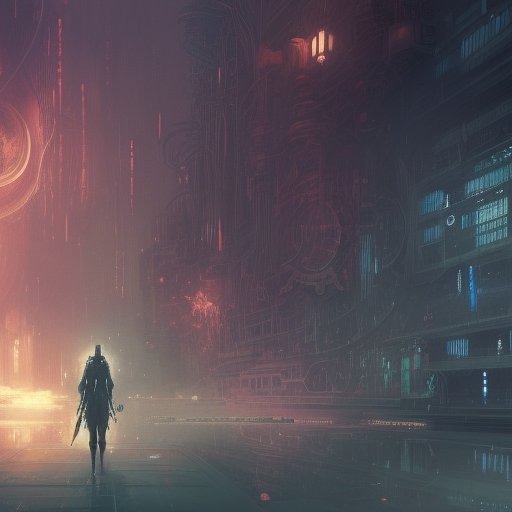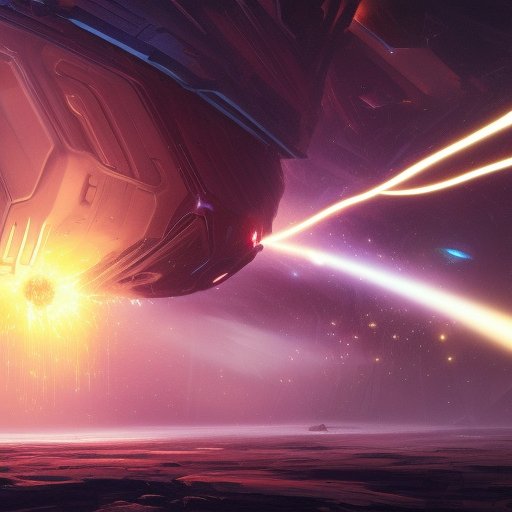
Welcome, folks! Today we’ll dive deep into the riveting history of the War of the Currents – the infamous clash of two colossal inventors: Thomas Edison and Nikola Tesla. Muse upon the birth of the rivalry between alternating and direct currents as it unfolded in the late 1800s in America. Explore this timeless debate of power transmission, the notorious propaganda campaign waged by Edison, and the ultimate demise of Tesla’s innovations. Gain insight into the cultural significance of this conflict and its impact on scientific development. Finally, bridge the gap between the past and the future as we analyze how the War of the Currents echoes into the present day. So buckle up and brace yourself for an electrifying adventure.
I. Introduction
Greetings, fellow spacefaring humans! Today, we embark on a journey into a war unlike any other – a battle of ideas, inventions, and power that shook the world to its very core. This is the war of the currents, my friends. A clash of the titans, pitting the inventor extraordinaire Thomas Edison against the master of electricity, Nikola Tesla.
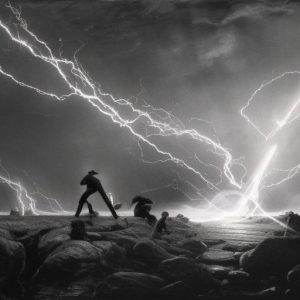
The year is 1888, and the world is on the verge of a technological revolution. Electricity, once a luxury of the wealthy elite, is slowly but surely gaining momentum, transforming canals into electric powerhouses, plugging factories into infinite potential, and lighting up the night sky like a giant Christmas tree.
It is in this world that Edison reigns supreme, hailed as the wizard of Menlo Park, the genius behind the incandescent light bulb, and the founder of the first electric utility company. Utilizing his vast resources and immense influence, Edison launches a massive propaganda campaign against his lesser-known rival, Nikola Tesla, who espouses the merits of alternating currents (AC) compared to Edison’s direct current (DC).
The stakes are high, and the tension is palpable. Edison and his loyal team of engineers work day and night to discredit Tesla, spreading fear and panic among the populace through a series of gruesome demonstrations, showcasing the ‘danger’ of AC power through the electrocution of animals and even a hapless convict.
Meanwhile, Tesla, the charismatic visionary, struggles to gain a foothold in the market, hampered by lack of funds, inadequate marketing, and distrust from his peers. However, Tesla’s breakthroughs in the field of AC motors, transformers, and wireless communication had already proven vastly superior to DC.
Thus begins a battle that resonates throughout the ages, shaping the course of scientific progress, cultural imagination, and even future gaming. So let’s dive deep into the War of the Currents, dear readers, and discover the thrilling legacy of Edison vs. Tesla that lives on, even today.
II. The Battle of Ideologies
Welcome back, intrepid explorers! Now, as we venture further into the War of the Currents, we must first understand the battle lines drawn by Edison and Tesla. At the heart of this conflict lies the question of what kind of power system will dominate the future – direct current (DC) or alternating current (AC).
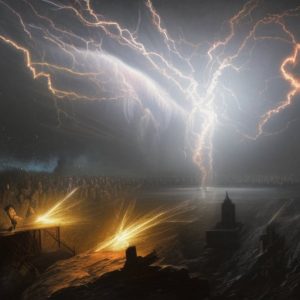
Edison, the shrewd businessman, had already established an empire with his DC system, which relied on constant voltage and was ideal for lighting up homes and small businesses. However, the main drawback of DC was its inability to travel long distances without significant power loss. This made it unsuitable for transmitting power from power plants to urban centers or factories.
In contrast, Tesla’s AC system utilized constantly changing voltage, making it far more efficient and adept at long-distance transmission. This meant that AC could potentially reach a much wider market, powering industries and homes alike from a single power grid. Therein lies the crux of the conflict – the DC camp, led by Edison, espouses stability and safety, while the AC camp, headed by Tesla, prioritizes efficiency and potential for growth.
But the battle of ideologies extends far beyond mere engineering preference. Edison, keen on maintaining his monopoly on the industry, launches a vicious propaganda campaign to discredit Tesla’s AC system. In what became known as the “War of Currents”, Edison’s team electrocutes hapless animals with AC power, labeling it as “dangerous” and “unsafe”. Edison even proposes the use of AC-powered electric chairs for executions, further cementing AC as the ‘killer current’.
Tesla, however, maintained a grave but dignified silence, determined to let the superiority of his AC system speak for itself. And indeed, despite Edison’s best efforts, AC emerged victorious, becoming the norm for power transmission across the world.
Thus, dear readers, we witness the battle of ideas that defined an era, where the strength of one man’s vision clashed with the entrenched interests of another. But let us delve deeper into the personalities behind the War of the Currents, as we explore Edison and Tesla’s virtuosic inventiveness and their ongoing influence on science and technology in the modern-day.
III. The Rise of Edison and the Fall of Tesla
The war rages on, dear readers, and there is no end in sight. Edison’s relentless campaign takes a brutal toll on Tesla and his team, who do their best to keep pace with the onslaught of propaganda, much less their technological advancements. Edison’s efforts pay off as DC becomes the primary method of electricity distribution in the United States, and he becomes a household name.
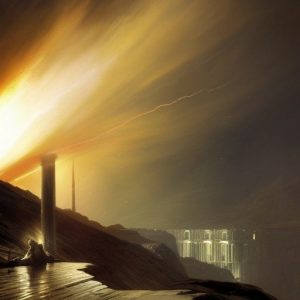
Tesla, on the other hand, struggles to find backing for his innovative ideas, and his reputation is tarnished by Edison’s vicious attacks. Eventually, Tesla is forced to part ways with the company he once worked for and must set out on his own. But Tesla’s genius is not to be underestimated. Unfettered by Edison’s influence, he works independently on new technologies while studying the principles of high frequency and electromagnetism.
As the years pass, the debate between AC and DC heats up, and Edison becomes increasingly desperate. In a final desperate attempt to discredit Tesla’s ideas once and for all, Edison proposes a public electrocution using AC power. The execution is carried out using Tesla’s technology, but the stunt backfires, and the public begins to sour on Edison’s propaganda.
Despite the victory, Tesla continues to struggle financially, and his scientific interests become increasingly eccentric – from studying wireless communication with pigeons to experimenting with a ‘death ray.’ Although he remains widely respected in scientific circles, Tesla never regains the fame, fortune, or recognition he so justly deserves.
Edison’s victory over Tesla is, in hindsight, a Pyrrhic one. Though Edison is known throughout the world and credited with one of the greatest inventions of all time, Tesla’s contributions to science, including alternating current, the induction motor, and wireless communication, are indispensable to our modern way of life.
So continues the War of the Currents – an epic tale of technological progress, scientific ambition, and cultural impact that still resonates today.
IV. The Cultural Impact of the War of the Currents
Behold, brave readers, the lasting impact of the war of the currents on our cultural fabric! The battle between Edison and Tesla was not merely an engineering competition – it quickly became a war of ideologies, of class struggle, and of the triumph of progress over stagnation.
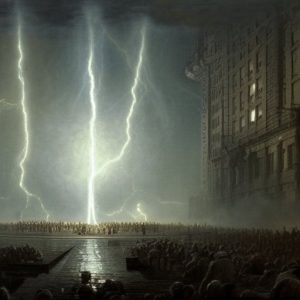
Edison’s campaign to paint AC power as dangerous and deadly played into the fears of the masses, creating a cultural taboo against alternating currents that persists even today. The ‘War of Currents’ became a phrase that symbolized the dangers of fast change and the inherent fear of the unknown.
Yet, despite the cultural prejudices against him, Tesla went on to make pivotal contributions to the field of electricity, paving the way for our modern-age power grids, motors, and AC induction. Without his innovations, we would not have the networked world we take for granted today.
The cultural impact of this war permeated all spheres of society, influencing artistic movements, political debates, and even popular culture. From the revolutionary book ‘The Age of Electricity’ by B.A. Behrend, which documented Tesla’s rise to fame, to David Bowie’s hit song ‘Heathen (The Rays)’, which included a nod to Tesla and his brilliant mind – the echoes of the war of the currents remain alive and well.
The cultural impact of the war of the currents continues to reverberate even in the digital age. As we face rapid technological advancements and an influx of new ideas, the lessons of the past continue to guide us. The war of the currents serves as a reminder that innovation and progress require bold vision, charismatic leadership, and steadfast courage to make those ideas a reality. As we navigate the challenges of the future, we must do so with the knowledge of where we come from and with the respect for the battles that have forged our path.
V. The Future of Energy
Hold on to your anti-gravity boots, folks, as we jet off into the future of energy, all thanks to the groundbreaking innovation of Edison and Tesla. The War of the Currents may be over, but its impact still reverberates in modern times.
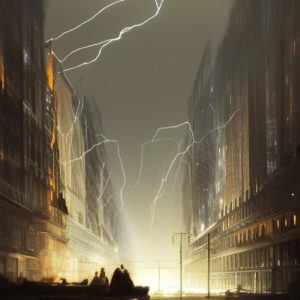
The development of the electrical grid, which began under Edison’s leadership, has become one of the defining features of modern civilization. Millions of people worldwide have access to affordable and reliable electricity, improving their standard of living and driving economic growth.
Meanwhile, Tesla’s work in the field of AC power has paved the way for the adoption of clean energy sources like wind and solar, which use AC electrical systems for efficient energy transfer. Tesla’s vision of wireless power transfer has also been resurrected, with researchers exploring the potential of transmitting electricity over the airwaves without the need for cables or wires.
Additionally, this rivalry has a lasting impact on the gaming industry, as we have seen nods to Edison and Tesla in some of our favorite games. Take the Assassin’s Creed franchise, for example, where players can interact with historical figures such as Edison to help shape the course of history.
But, alas, the future of energy is not without its challenges. The demand for energy is skyrocketing, making it necessary to generate power using innovative technology and renewable sources of energy. Climate change is also an issue that must be addressed, with the world facing the ominous consequences of greenhouse gas emissions.
The good news is that technology is advancing faster than ever before, bringing us closer to a clean and sustainable energy future. From the development of fusion energy to the creation of smart grids that optimize energy usage, the potential for a brighter, cleaner future of energy is limitless.
VI. The War of the Currents in Popular Culture
And now, dear space adventurers, we descend into the realm of popular culture, where the War of the Currents continues to electrify the imagination of storytellers and gamers alike. From Ridley Scott’s Blade Runner to the epic world of Cyberpunk 2077, the impact of Edison and Tesla’s rivalry is still felt, even in the distant future.
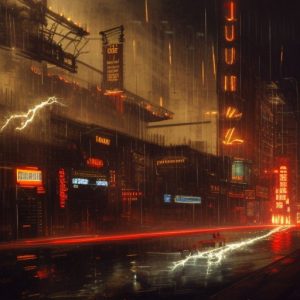
In Blade Runner, the neon-lit streets of Los Angeles are powered by massive advertising blimps that hover overhead, reminiscent of Tesla’s wireless power transmission towers. The film’s iconic opening sequence features Edison’s phonograph, heralding the age of electronics and synthetic technologies.
Meanwhile, in the world of Cyberpunk 2077, the power struggle between AC and DC is woven into the very fabric of the game’s lore, as players must navigate the politics of energy conglomerates and city-wide blackouts. Misinformation, manipulation, and sabotage are rampant, as the corporations vie for control over the city’s dwindling resources.
The War of the Currents has also inspired countless books, comics, and music. From Greg Bear’s science fiction epic ‘The Forge of God,’ where Tesla’s inventions play a major role in the story’s apocalyptic events, to the indie rockers Electric Six’s cheeky ode to Edison’s nemesis in their hit song ‘Danger! High Voltage.’ The cultural impact of this historical conflict knows no bounds.
But what does the War of the Currents represent in popular culture? Is it a cautionary tale about the dangers of unchecked power, be it electrical or otherwise? Or is it a testament to the constant struggle between old and new technologies, tradition and innovation, conformity and rebellion? Perhaps it’s all of these things and more, a complex tapestry of themes and motifs that continue to inspire and provoke us to this day.
So let us pay homage to the visionaries and innovators of the past, and the creative minds that keep their legacy alive. Join me, fellow explorers, as we venture forth into the world of imagination, where the sparks of the War of the Currents still ignite the fires of our minds.
VII. Conclusions
And so, our journey comes to an end, dear readers. The War of the Currents, a battle fueled by ego, passion, and ambition, changed the very course of history, spawning a revolution in electrical engineering, scientific innovation, and cultural mythology.
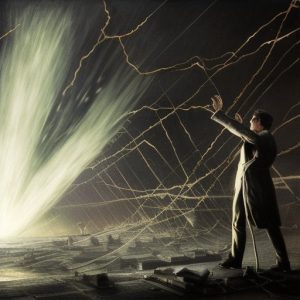
The legacy of Edison and Tesla endures to this day, manifesting in the ongoing debate between AC and DC power, and serving as a testament to the power of competition and the importance of scientific integrity.
Indeed, the War of the Currents paved the way for a brighter, more electrified future, illuminating the path for countless innovations, from the telegraph to the internet, from cognitive computing to the internet of things.
Thanks to Edison and Tesla’s rivalry, we have made incredible strides towards harnessing the power of electricity, consolidating energy grids, improving power transmission, and discovering cleaner, more sustainable sources of electricity.
But the debate between AC and DC endures, both in research labs and in public discourse, and as we continue to search for new horizons and push the boundaries of scientific discovery to new heights, the legacy of the War of the Currents will undoubtedly serve as a beacon of inspiration, urging us to embrace competition, integrity, and the boundless potential of human ingenuity.
So let us take a moment to remember the heroes and the villains of this epic clash, to honor the innovations and the advancements that it birthed, and to appreciate the rich historical and cultural legacy that it has bequeathed to us. After all, the story of the War of the Currents is not just a tale of rival inventors, but a testament to the indomitable human spirit and our ceaseless quest for knowledge, adventure, and the unknown.
